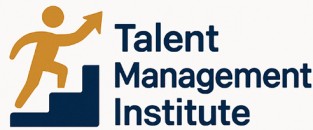
Understanding the Importance of Leadership Development Goals
The Value of Well-Defined Leadership Development Goals
In the fast-paced corporate world, setting precise and actionable development goals is crucial for any leader looking to steer not only their growth but also that of their team and organization. Understanding the importance of leadership development goals is foundational to cultivating strong leaders who can effectively manage teams and deliver results. Establishing clear leadership goals isn't just about personal advancement; it's about fostering a work environment that values growth, effective communication, and emotional intelligence. When leaders articulate their goals, it helps align individual efforts with broader organizational objectives. This alignment enhances strategic outcomes and ensures that leaders are prepared to handle complex business challenges. Moreover, setting specific goals aids in the honing of key leadership skills such as decision making, time management, and constructive feedback. These are essential for improving work relationships and the overall work environment. By incorporating SMART criteria—specific, measurable, achievable, relevant, and time-bound—leaders can create development goals that are not only clear but also practical. For instance, a SMART leadership goal might be aiming to enhance emotional intelligence within a team and receiving 360-degree feedback on progress over a three-month period. Leadership development goals also assist in professional growth, enabling leaders to transition from simply focusing on immediate tasks to strategizing long-term success. To aid in establishing these effective goals, engage with insightful resources like engaging leadership icebreakers for effective team building to elevate both personal and team achievements.Identifying Key Competencies for Leaders
Recognizing Core Competencies in Leadership Roles
Identifying the key competencies for leaders is fundamental for effective leadership development. Recognizing these competencies allows you to shape the leadership goals that will genuinely drive the growth of both the leader and the organization. Core leadership competencies often encompass emotional intelligence, decision making, and time management. Strengthening these skills not only helps leaders in developing better relationships with their team members but also fosters a work environment where everyone can thrive and improve. In the quest to define leadership development goals, SMART goals prove invaluable. These goals are Specific, Measurable, Achievable, Relevant, and Time-bound, giving leaders a clear path to follow. One example goal could be improving emotional intelligence through regular feedback from team members over a period of three months. This reflects a specific and time-bound approach, aiming for measurable and achievable improvement. Leadership skills are varied, but understanding which competencies are vital for your company ensures that leaders can align better with strategic organizational objectives. Strong decision-making skills will aid leaders in navigating complex situations, while effective time management can increase productivity, benefiting long-term growth. In addition to goal setting, engaging leadership styles that emphasize skills like emotional intelligence can greatly enhance team dynamics. More on the role of a development director can offer further insights into these competencies. Ultimately, the identification of key competencies is more than just a checklist; it's a strategy to sculpt leaders who are equipped to guide their teams towards shared goals. By focusing on these skills, you not only improve individual leader performance but also contribute to a more cohesive, motivated, and effective team.Aligning Leadership Goals with Organizational Objectives
Connecting Leadership Development Goals with Organizational Vision
In the fast-paced evolution of the corporate world, aligning leadership goals with organizational objectives is vital. This alignment not only ensures that leadership development efforts are intentional but also cultivates leaders whose skills contribute significantly to the company’s progress. A leader’s competencies should reflect the organization's broader aims. By ensuring that leadership development goals are not just about personal growth but are bound to the company's strategic objectives, leaders become better equipped to drive success.- Specific and Achievable Goals: Setting specific, achievable goals using the SMART framework cultivates clear pathways for leaders. For instance, a leader aiming to enhance emotional intelligence could leverage SMART goals to focus on developing better relationships with team members over three months.
- Feedback and Adjustment: Constructive feedback plays a crucial role. Regular sessions provide insights that help leaders align their goals with evolving organizational needs, fostering an adaptive work environment where flexibility is encouraged.
- Improving Decision Making: Aligning goals with organizational objectives necessitates enhanced decision-making skills. Engaging leaders in strategic planning meetings ensures that they understand the company’s direction and can contribute to shaping its future.
Strategies for Setting Achievable Leadership Goals
Crafting Attainable Leadership Goals with a Clear Vision
Setting effective leadership goals demands a strategic approach, ensuring they are not only realistic but also inspiring and growth-oriented. To craft achievable goals, consider integrating the SMART criteria, which ensure objectives are Specific, Measurable, Achievable, Relevant, and Time-Bound.- Specificity: A clear specification in leadership goals helps leaders maintain focus and direction. For instance, transforming "improve leadership skills" into "enhance communication skills by resolving team conflicts within three months" provides a defined course of action.
- Measurability: Incorporate measurable criteria to track progress. Establish metrics, such as frequency and quality of feedback from team members, to assess development over time.
- Achievability: While challenging, goals must remain within reach. Align leadership objectives with available resources and support systems, ensuring tasks are feasible and management expectations are grounded in reality.
- Relevance: The relevance of goals must synchronize with organizational objectives, enhancing both personal growth and company success. For example, if building a cohesive work environment is a company priority, a leadership goal might focus on improving team relationships.
- Time-Bound: Setting a deadline fosters urgency and commitment. Establish a timeline, such as achieving a particular goal within a period of three months, to motivate leaders and retain focus.
Measuring Progress and Success in Leadership Development
Tracking Leadership Growth and Achievements
Measuring the progress and success in leadership development is essential to ensure that the goals set are effective and indeed fostering growth. By evaluating the progress periodically, a company can recognize the areas where leaders thrive and identify where additional support might be necessary.
Firstly, setting SMART goals—specific, measurable, achievable, relevant, and time-bound—acts as a fundamental step in this process. For example, a leader may aim to improve their time management skills within three months by implementing daily planning sessions with their team members. This kind of specific goal helps in maintaining accountability and tracking outcomes.
Constructive feedback is another critical component for growth. Regular check-ins and feedback sessions, both with peers and mentors, allow leaders to understand their strengths and areas for improvement. Effective communication and emotional intelligence can be a focus here, enhancing relationships with the team and molding a positive work environment.
Moreover, evaluating leadership skills in the context of organizational objectives ensures alignment with the company’s vision. Tools and methods such as performance metrics, surveys, and observational assessments can be employed to gauge development outcomes. This ensures leaders are not only achieving personal development goals but also contributing positively to the broader organizational goals.
A balance between short-term and long-term goals is essential too. While immediate improvements, such as better decision making, can be evident in day-to-day activities, long-term achievements might be more subtle and productive over time.
Finally, fostering an environment that encourages leaders to continuously learn and grow—even beyond initial development goals—will undoubtedly contribute to a more effective and resilient leadership cadre, inevitably benefiting the entire organization.













